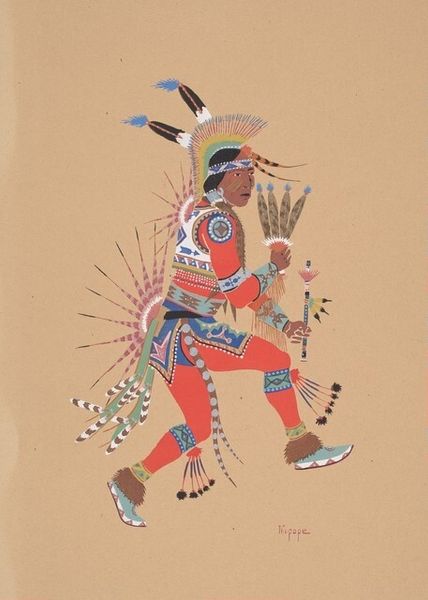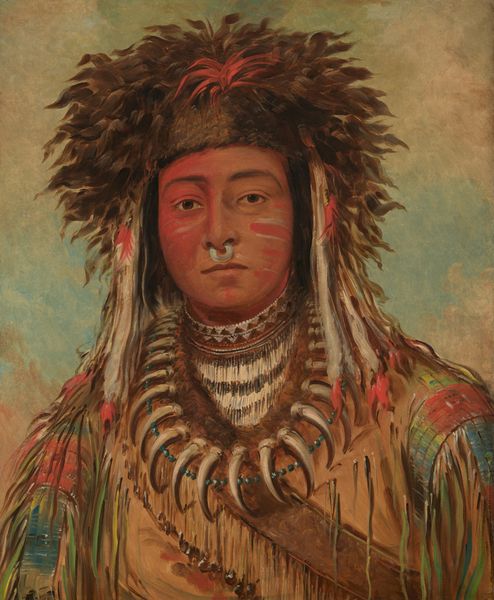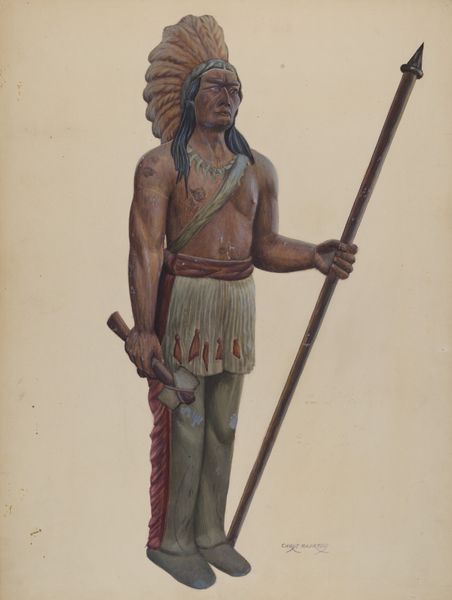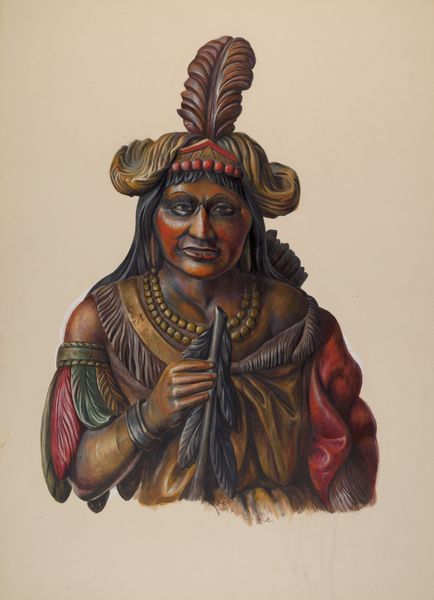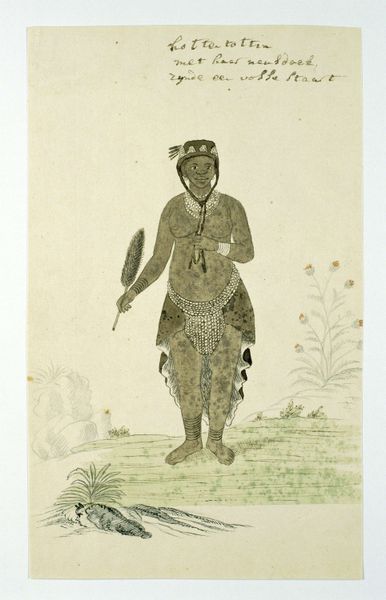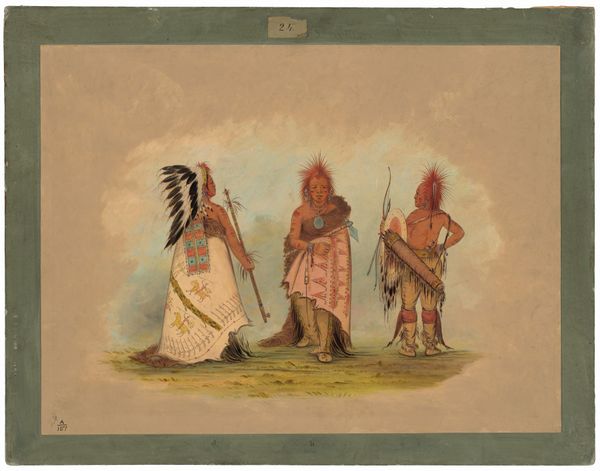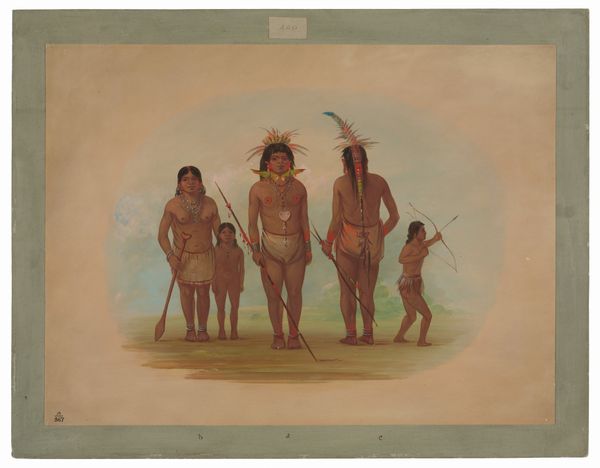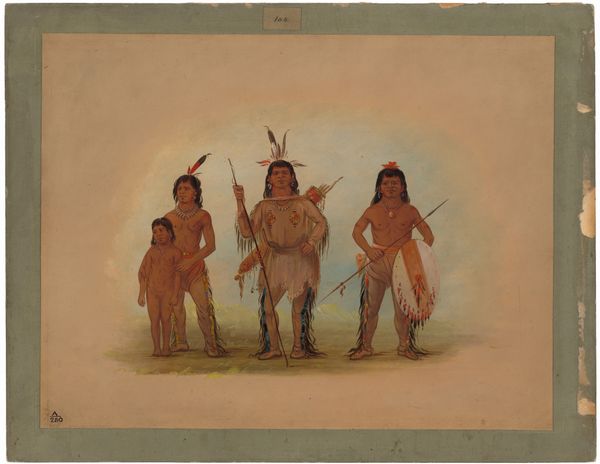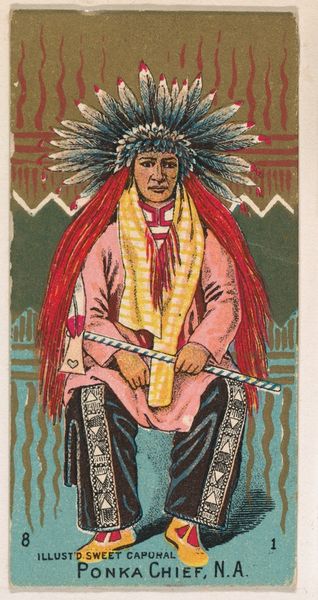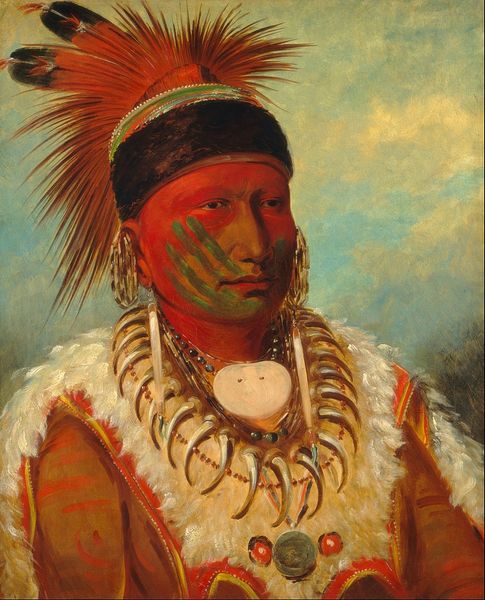
painting, gouache, paper
#
portrait
#
painting
#
gouache
#
figuration
#
paper
#
indigenous-americas
Copyright: Stephen Mopope,Fair Use
Curator: Stephen Mopope painted this work, titled "Untitled (Dancer)," in 1932, using tempera. It's a striking example of Indigenous American art. What's your first impression? Editor: Dynamic, almost suspended in time. The flat application of the tempera emphasizes the figure’s contours and ornamentation, lending an elegant air to the dancer’s movement. There is also something melancholic about the tone, do you think this mood permeates the piece? Curator: The seeming melancholia you sensed is understandable considering the historical context. Mopope belonged to the Kiowa Six, a group of Native American artists who actively exhibited work, during a time when Indigenous cultures faced significant pressure to assimilate. He embraced elements of European painting but, unlike some, never surrendered the pictorial language or traditional subject matter of his heritage. This work reflects their role in navigating fraught political waters. Editor: Right, viewing it from a purely art-historical angle misses crucial cultural context. The feather, the ornamentation, all resonate with a deeper symbolism relating to community identity and continuity. It brings up issues of representation and agency; was he able to fully express himself despite outside pressure, or is some of the melancholy derived from it? Curator: That's an incisive question. Mopope was among a generation walking a fine line; part of the goal was to promote pride and respect for indigenous culture but it inevitably had to be mediated for a mainstream audience largely ignorant of the cultural background and symbolism inherent to Kiowa people. His active participation challenged conventional definitions of American art. Editor: The muted colors and simplified forms seem, in a way, defiant. This aesthetic choice directs attention to the significance and performative function of the regalia and the dancer, underlining a sense of cultural pride. Curator: Yes, the “flatness,” reminiscent of traditional ledger art, underscores this. We see that his paintings, even displayed in galleries or museums, never lost their inherent ties to Indigenous ceremonies and social life, thereby resisting attempts at full assimilation. It allows the painting to both honor tradition and subtly challenge established art paradigms. Editor: Ultimately, it pushes us to consider what "Untitled (Dancer)" can teach us, today, about power dynamics, self-expression, and what happens when art becomes a vehicle for resistance.
Comments
No comments
Be the first to comment and join the conversation on the ultimate creative platform.

